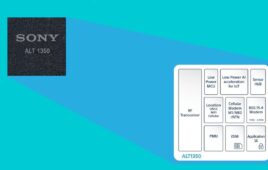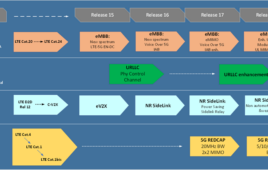SAN DIEGO—More than a year after the first Android phone was announced, the open-source operating system seems to be gaining a serious foothold.
Motorola, which last month announced its first Android phone, the Cliq, told developers, analysts and press Tuesday it will have a second handset using the OS before the end of the year and many more in 2010. Meanwhile, Verizon Wireless said in a separate announcement it will have two Android handsets this year and Motorola is expected to supply one of them.
Photos taken at Verizon Wireless’s announcement showed two Android phones, one an HTC model and another identified as the Motorola Sholes phone. Motorola declined to comment.
Also this week, T-Mobile USA, which launched the first HTC Android phone last year, said it will start selling the Android-based Samsung Behold II. In addition, Sprint will sell the HTC Hero Android phone.
Android will be the main focus for Motorola’s smartphones in the coming months. Sanjay Jha, the company’s co-CEO, told a developer’s conference the company plans to have “tens” of Android phones in 2010 following this year’s two models.
“The smartphone will define the growth of this industry,” Jha said at the event, held on the eve of the official opening of the CTIA Wireless I.T. & Entertainment 2009 show. He said more than 250 million smartphones will be sold globally in 2010.
Motorola picked the Android platform because it has an open, flexible and extensible ecosystem, Jha said. He commented that Motorola will use another platform, although he didn’t specify which. Christy Wyatt, a company vice president for smartphones, said later that Motorola is “interested” in future versions of Microsoft Windows Mobile for the enterprise.
Motorola’s differentiator for the Android platform is the messaging-focused Motoblur interface, which uses widgets to link to a variety of social networking applications and messaging. The handset manufacturer expects Motoblur to be on most of its Android phones, although left open the possibility that a carrier might not want it for differentiation reasons.
Wyatt said Motoblur focuses on messaging and social networking because that is what consumers want. Half of mobile data traffic today is associated with social networking, she said, adding that consumers don’t want a different experience on their mobile phones as on their computers.
Rick Osterloh, Motorola’s vice president of product development for Android, demonstrated the Cliq phone with Motoblur. The touch screen phone with a slider keyboard will be launched soon by T-Mobile USA. It already has launched outside the United States under the name Dext.
The Motoblur interface pulls together content from social networking sites like Facebook, MySpace and Twitter, as well as gathering messaging from an owner’s contacts.
Wyatt said Motoblur, although developed for Motorola phones, does not conflict with Google’s open source Android experience. Motoblur does provide differentiation for Motorola handsets, she said, but the phones still will fully support all Android services. Motoblur also can be customized for different operators.
Wyatt also said she believes there eventually will be two or three smartphone operating systems, with Android being one of them. When pressed, she said Windows Mobile and Symbian would be obvious candidates for the future. Symbian is the largest smartphone OS, principally through its relationship with Nokia.




